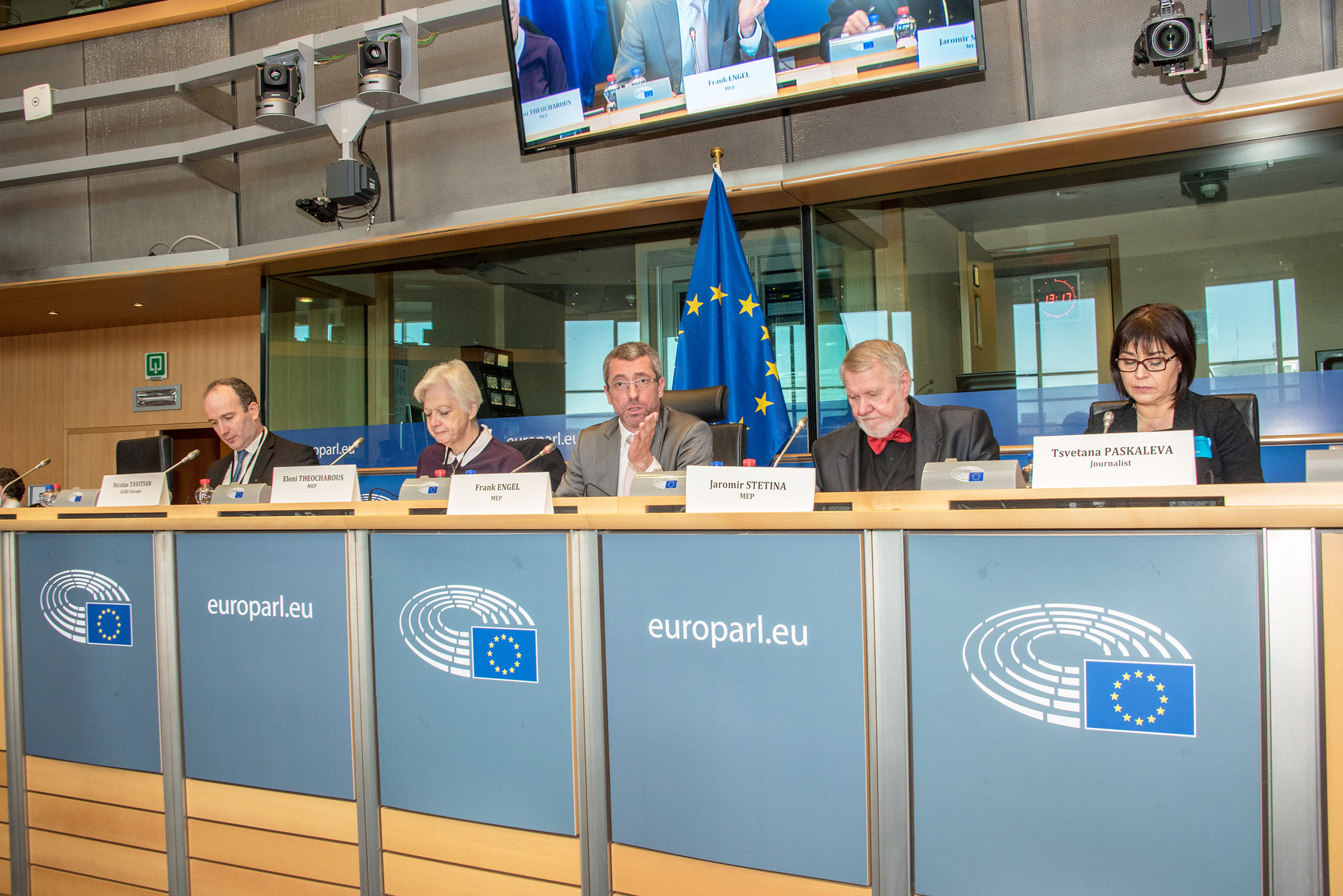In February 1988, mass rallies in Stepanakert and Yerevan sparked the Artsakh Liberation Movement. Thus, began the journey of independence for the Armenians of Artsakh, which, in turn, set the stage for a free and independent Armenia, won the support of the worldwide Armenian diaspora and reshaped geopolitics in the Caucasus. To mark the significance of this watershed moment in modern Armenian history and to reaffirm its unwavering commitment to Artsakh’s state-building efforts, AGBU organized a series of commemorative events in North America and Europe.
In Brussels, AGBU Europe and European Friends of Armenia (EuFoA) held a conference on February 28th in the European Parliament entitled “The EU and Nagorno-Karabakh:1988-2018.” With over 200 people in attendance, the conference engaged Members of European Parliament and other thought leaders in a conversation about the future of EU involvement with Artsakh, followed by audience participation. “This conference opens up a space for a constructive discussion on a sensible European policy with regards to Artsakh and we will continue to work in that direction,” said AGBU Europe Director Nicolas Tavitian.
Hosted by MEP Frank Engel (European People’s Party), the program was divided into two sessions featuring six speakers. The first panel included Bulgarian journalist Tsvetana Paskaleva, as well as MEPs Jaromir Stetina (European People’s Party) and Eleni Theocharous (European Conservatives and Reformists Group). They reiterated their support of the right to self-determination for the Armenians of Artsakh. Stetina and Theocharous shared their experiences working on the ground during the conflict in the early 1990s, as a journalist and a military surgeon respectively. Theocharous called the European Parliament to further contribute towards a better understanding of the conflict and the peace process. Paskaleva shared a personal account of reporting from Artsakh.
In the second session, MEP Lars Adaktusson (European People’s Party), Paul Meerts, senior associate at the Clingendael Netherland Institute of International Relations, and Licínia Simao, assistant professor at the University of Coimbra, Portugal, opined that the EU should at least support de-mining activities and human rights monitoring in the region. Adaktusson called for a more proactive role of the European Union in conflict resolution and human rights protection, as well as the direct involvement of Artsakh in negotiations, together with Armenia and Azerbaijan. “In other cases, the EU has been able to carry out humanitarian work in the territory of unrecognized entities which also should be possible in Nagorno-Karabakh,” said Adaktusson adding that Artsakh’s isolation has a negative impact on the young generation who are often deprived of educational opportunities in Europe. While Paul Meerts focused on the importance of confidence-building measures in the region, Professor Simao spoke about the need to improve cooperation between the EU and the OSCE Minsk Group to ensure all entities have a common policy, especially regarding peacekeeping activities. The speakers also discussed the 10 proposals presented by the conference organizers-recommendations for European Union involvement in paving the way for peace in Artsakh.
On February 22, the AGBU commemorated the 30th anniversary with a presentation and photo exhibition at its New York headquarters. Davit Hakobyan, the official photographer to the President of Armenia, portrayed the lives and service of Armenian soldiers through photos he took over the course of eight years. His book titled The Trembling Soil Under Their Feet is a collection of around 70 photos, including some of the images on display.
Among the attendees were Permanent Representative of Armenia to the UN Ambassador Zohrab Mnatsakanyan and Permanent Representative of Artsakh in the United States Robert Avetisyan. In his opening remarks, Ambassador Mnatsakanyan stated that, “This exhibition is about young boys who are defending their homeland.” He urged the audience to take action. “I would ask you to appeal to as many as you can about this exhibition and Artsakh.”
Avetisyan offered a compelling presentation about the political structure and recent developments in Artsakh, stressing that it’s a democratic country in a tough neighborhood. “It has proved over decades-non-recognized yet-that we are a reliable partner in negotiations and we are very efficient in using our resources, including the financial resources,” said Avetisyan in an interview. “Artsakh is free. It deserves to be recognized as an independent country and it deserves to have a more open and wide relationship with the United States,” he added.
He also mentioned that the “United States is the only country which has assisted the Republic of Artsakh since 1988.” Avetisyan is confident that American assistance could be allocated to various projects beneficial for the entire region.
Commenting on his first personal exhibition in New York, Hakobyan said: “This event means a lot to me, and I am impressed that people appreciate photojournalism.”
Hakobyan’s photos were displayed by AGBU Montreal a few days later. One hundred guests, including, Montreal city councilors, the Consul of the Republic of Armenia to Canada, AGBU benefactors and community members attended the exhibition. AGBU Montreal Chairman Chahé Tanachian gave a brief introduction to the history of the Nagorno-Karabakh conflict, saying: “The men and women serving in the Artsakh army are in reality guarantors of peace.”
Consul of the Republic of Armenia to Canada Sasun Hovhannisyan talked on behalf of Ambassador Levon Martirosyan, congratulating AGBU and Davit Hakobyan on the event. Robert Avetisyan joined the discussion via Skype and delivered his presentation remotely.
Artsakh became the new official name of the republic in 2017.
Established in 1906, AGBU (www.agbu.org) is the world’s largest non-profit Armenian organization. Headquartered in New York City, AGBU preserves and promotes the Armenian identity and heritage through educational, cultural and humanitarian programs, annually touching the lives of some 500,000 Armenians around the world.



















































